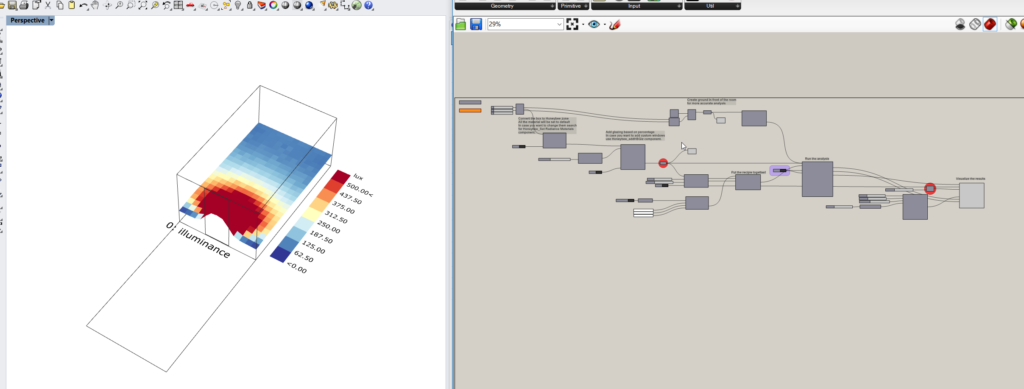The purposeful integration of natural light into architectural design, is now widely recognized as a healthy and environmentally friendly strategy. Building daylighting into your structure has several advantages in addition to improving aesthetics.
When designing sustainable, pleasant, and aesthetically pleasing environments, daylighting is essential for everything from increased occupant well-being and productivity to energy efficiency and LEED certification. In this article, we examine the benefits of daylighting and the cutting-edge simulation technologies that make it easier to put it into practice.

1. Daylighting for Employee Productivity and Well-Being
Human health, happiness, and productivity are significantly impacted by daylight. Natural light exposure improves mood, lowers stress levels, and helps with cognitive performance. Residents feel more connected to their surroundings, which enhances their pleasure and quality of life overall. According to studies, adding daylighting to businesses, healthcare institutions, and educational environments may improve patient recovery times, worker productivity, and student achievement.
2. Cost Savings and Energy Efficiency
Advantageous for building owners and operators as well as for the residents. Buildings may significantly decrease their dependence on artificial lighting throughout the day by carefully exploiting natural light, which will save energy. This results in lower energy costs, a smaller carbon impact, and more sustainably run buildings. The utilization of heating, ventilation, and air conditioning (HVAC) systems may be optimized by implementing daylighting solutions, which will further increase energy efficiency and cost savings.
3. Daylighting in the LEED Certification
The world-renowned green building grading system LEED (Leadership in Energy and Environmental Design) lays a big focus on daylighting. The LEED certification process counts daylighting as a credit, and construction projects may get points by proving that a certain proportion of their area achieves the minimum criteria (for example, 300 lux) for a predetermined period of the year. Building owners and designers may help achieve better LEED ratings and demonstrate their commitment to sustainability by putting into practice efficient solutions.

4. Lates Daylight Simulation Software
Modern simulation tools are available to architects and designers, who may use them to create and evaluate daylighting methods. Accurate prediction and visualization of daylight performance inside a building are made possible by tools like IES VR (Virtual Reality), TAS (Thermal Analysis Software), Ecotect, and Revit daylight analysis.
With the use of these tools, architects and designers may evaluate how different design aspects, such as window location, shading equipment, and interior finishes, glare control, and overall occupant comfort. Designers may improve their plans and make the most use of natural light by using these simulation tools.
Conclusion:
The benefits of daylighting for buildings, inhabitants, and the environment are many. Beyond raising productivity and occupant well-being, it also helps buildings achieve LEED certification and save money on energy. Architects and designers may develop optimum methods that maximize natural light penetration while retaining occupant comfort by using the capabilities of cutting-edge simulation technologies. Adopting daylighting as a fundamental design element not only supports sustainable practices but also produces spaces that are more beautiful and healthier for inhabitants to live in.



